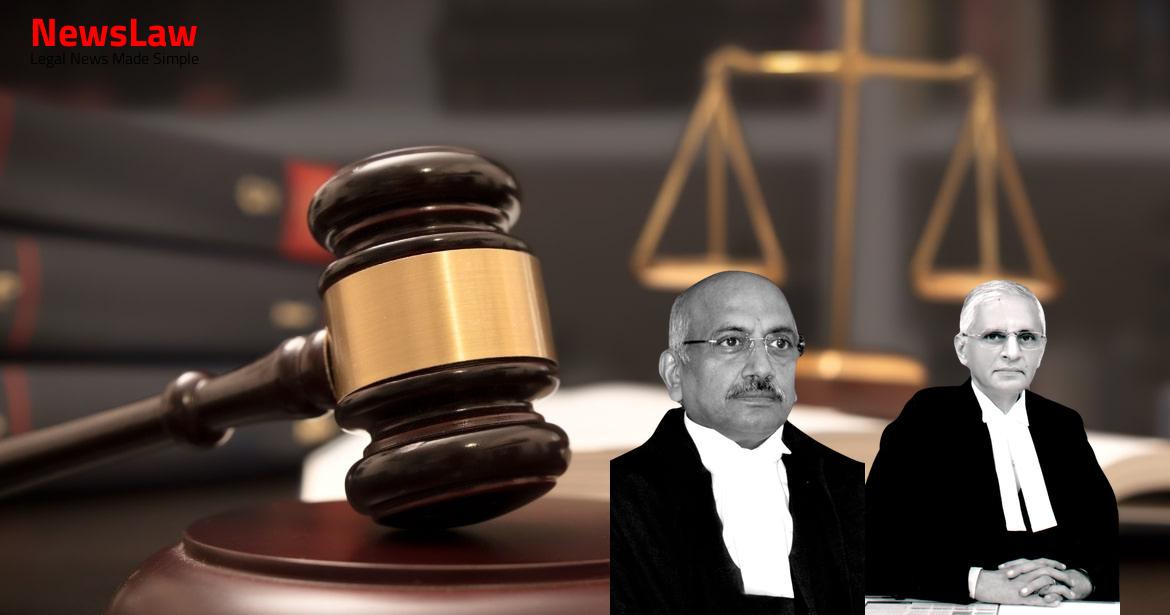Explore the intricate legal analysis conducted by the court regarding limitations in arbitration proceedings. The significance of adhering to time constraints and the court’s authority in appointing arbitrators is highlighted to ensure the efficient resolution of disputes. This comprehensive examination provides valuable insights into the interplay between the Arbitration and Conciliation Act and the Limitation Act, enhancing understanding of the legal intricacies involved.
Facts
- BSNL filed a review petition before the High Court, which was dismissed on 14.01.2021
- The High Court referred the disputes to arbitration in an Order dated 13.10.2020
- BSNL challenged the Orders dated 13.10.2020 and 14.01.2021 through the present Civil Appeal
Issue
- Two important issues considered in the present appeals
- Issue 1: Period of limitation for filing an application under Section 11 of the Arbitration and Conciliation Act, 1996
- Issue 2: Court’s discretion to refuse reference under Section 11 if claims are ex facie time-barred
- The factual background involves a tender notification by BSNL inviting bids for GSM cellular mobile network in certain regions
Analysis
- The analysis discusses the issue of limitation in relation to filing an application under Section 11 of the Arbitration and Conciliation Act, 1996.
- It highlights the distinction between jurisdictional and admissibility issues in arbitration proceedings.
- The importance of adherence to the limitation period for invoking arbitration and seeking appointment of an arbitrator is emphasized.
- The legislative amendments to Section 11, including the insertion of sub-sections (6A) and (6B), are examined in light of the jurisdiction of the arbitral tribunal.
- It underscores the significance of the doctrine of kompetenz-kompetenz empowering the tribunal to rule on its jurisdiction.
- The application of the Limitation Act, 1963 to arbitration proceedings and the implications of admissibility challenges are discussed.
- The Court’s authority in appointing an arbitrator even in cases of ex facie time-barred claims is deliberated upon, balancing jurisdictional issues.
- Various judgments and statutory provisions related to limitation and arbitration are cited and analyzed to provide a comprehensive view.
- The interplay between the principal Act of 1996 and subsequent amendments, as well as the role of the Court in appointing arbitrators, is detailed.
- The cultural shift brought about by the 2015 and 2019 amendments in clarifying the Court’s role in arbitration proceedings is examined.
- The 1996 Act was amended in 2015 to include provisions for the expeditious disposal of arbitral proceedings.
- Various timelines are provided in the 1996 Act for different stages of arbitration proceedings.
- Sections such as 11, 8, 9(2), 13, 16(2), and 34(3) outline specific time limits for filing applications, commencing arbitral proceedings, raising challenges against arbitrators, asserting jurisdiction, and filing objections before the Court.
- These timelines aim to ensure the timely resolution of disputes through arbitration.
- Section 43 of the 1996 Act incorporates the provisions of the Limitation Act, 1963, making it applicable to arbitration proceedings.
- The 1996 Act has been amended in 2015 and 2019 to impose time limits for expeditious resolution.
- Preliminary issues in Section 11 applications are classified into categories by the courts.
- Judicial intervention at the appointment stage is minimized by the doctrine of kompetenz-komptenz.
- The 2019 Amendment Act deleted sub-section (6A) in Section 11, but it is yet to be notified.
- Applications under Section 11 must establish the existence of an arbitration agreement before reference is made.
- Article 137 of the Limitation Act, 1963 governs the period for filing Section 11 applications.
- Recent judgments emphasize screening out non-existent arbitration agreements or non-arbitrable disputes.
- The Court’s jurisdiction under Section 11 is limited to expeditious and efficient disposal at the referral stage.
- The ‘tribunal versus claim’ test is used to determine jurisdiction or admissibility issues.
- Statutory time bars are considered admissibility issues according to legal precedents.
- The Court’s role under Section 11(6A) is to solely examine the existence of the arbitration agreement.
- Recent judgments affirm the limited scope of power under Section 11 and emphasize efficient disposal of claims.
Decision
- Notice invoking arbitration issued 5 ½ years after rejection of claims on 04.08.2014.
- Notice invoking arbitration is ex facie time barred.
- Disputes between parties cannot be referred to arbitration in this case.
- Clear notice invoking arbitration setting out the ‘particular dispute’ must be received within 3 years from rejection of final bill.
- Failure to meet the 3-year deadline results in time bar prevailing.
Case Title: BHARAT SANCHAR NIGAM LIMITED Vs. M/S NORTEL NETWORKS INDIA PVT. LTD. (2021 INSC 175)
Case Number: C.A. No.-000843-000844 / 2021



